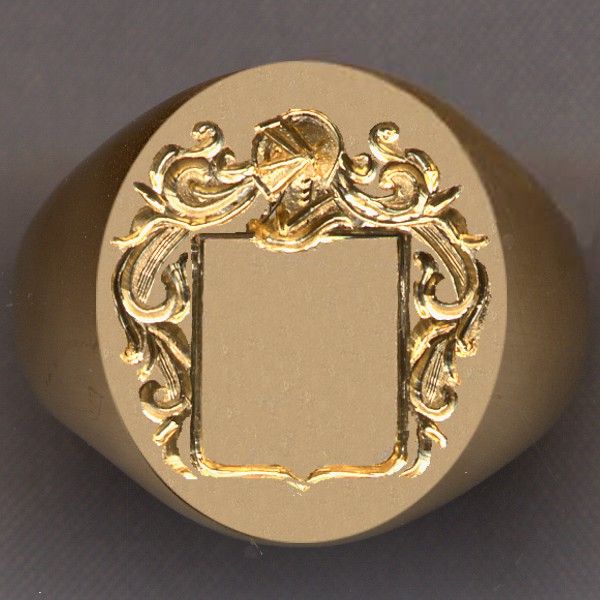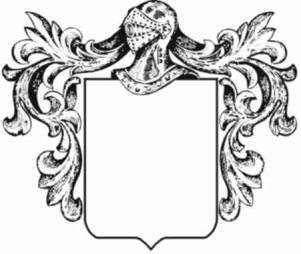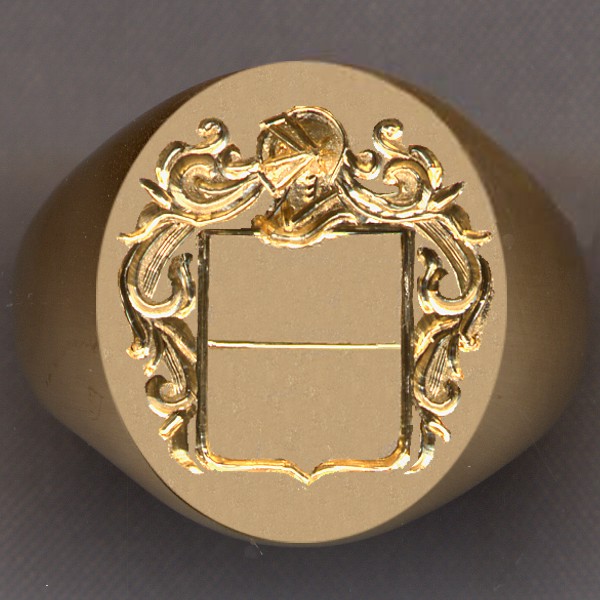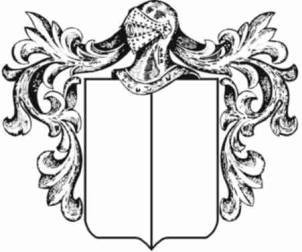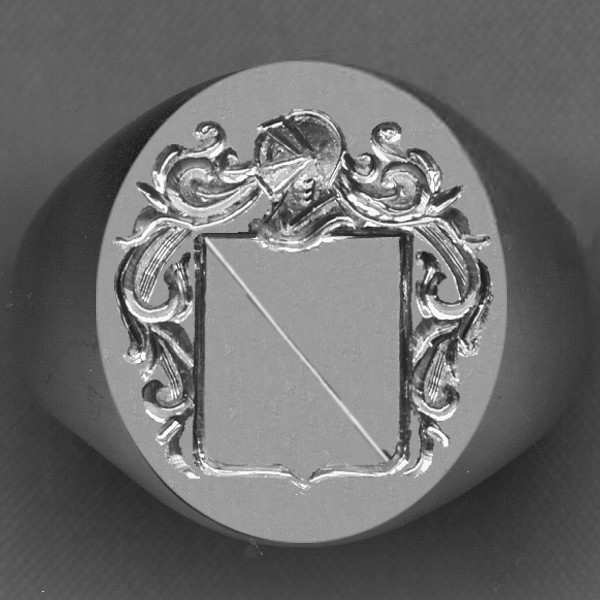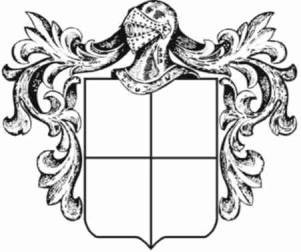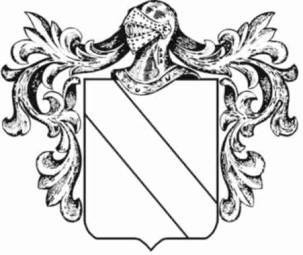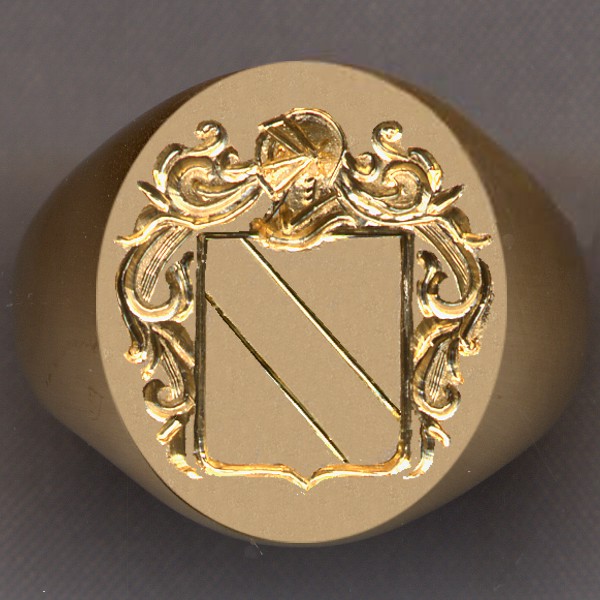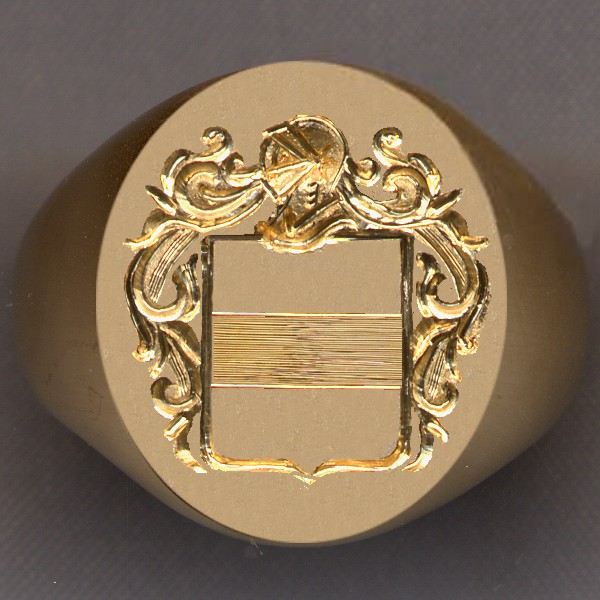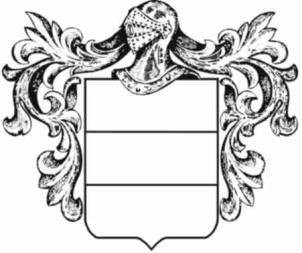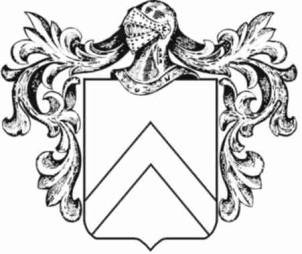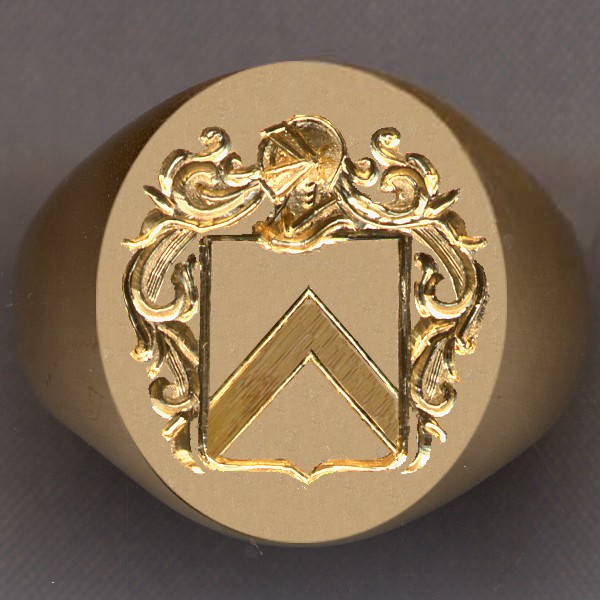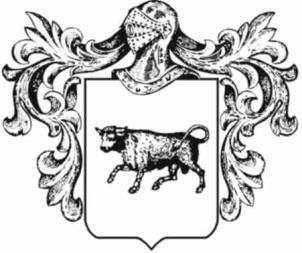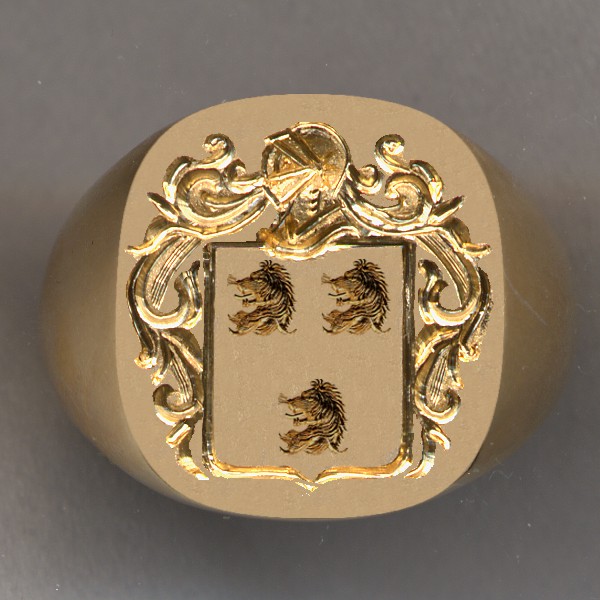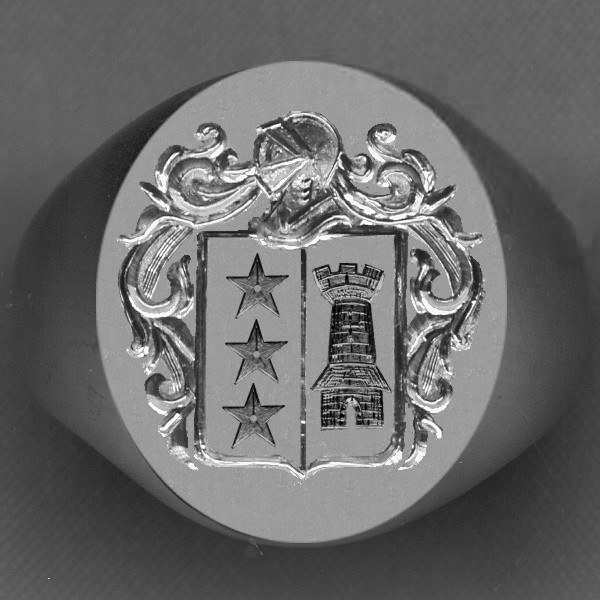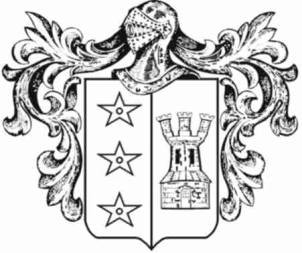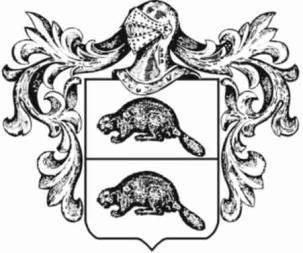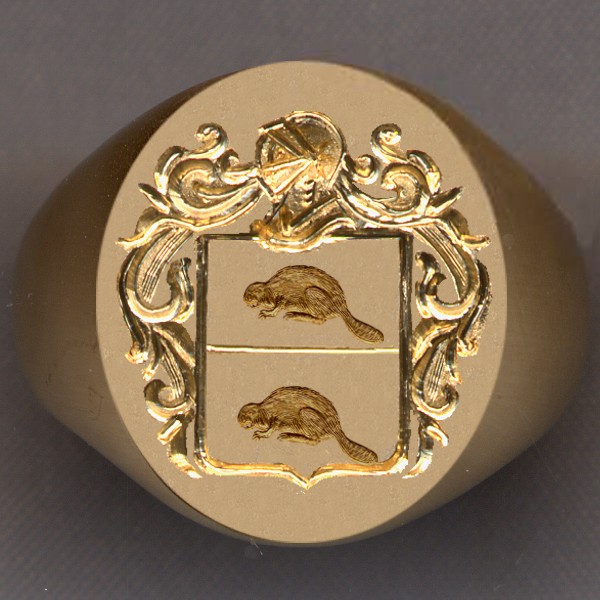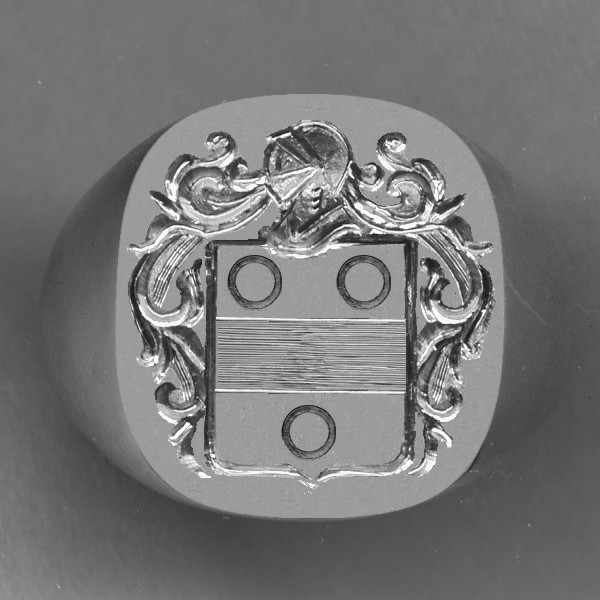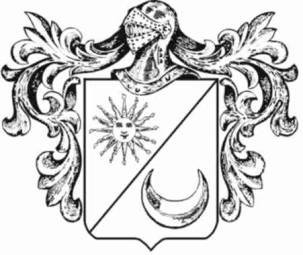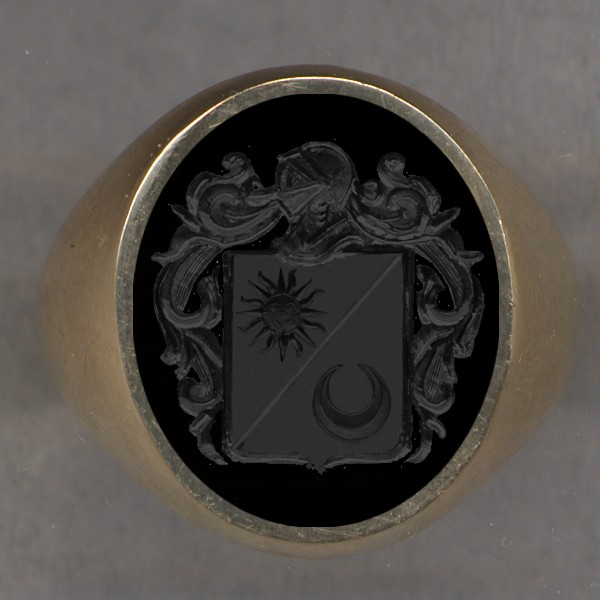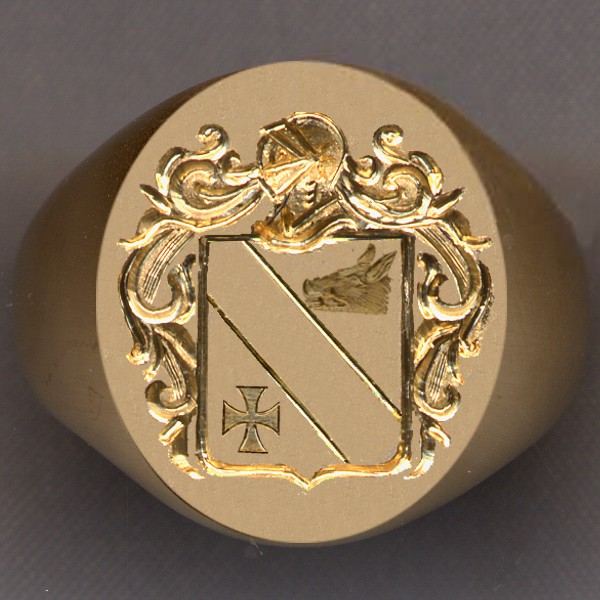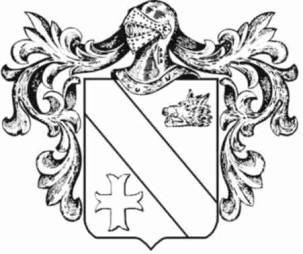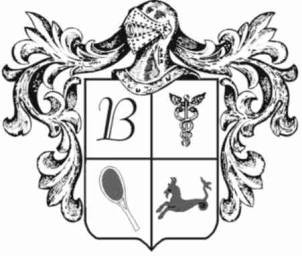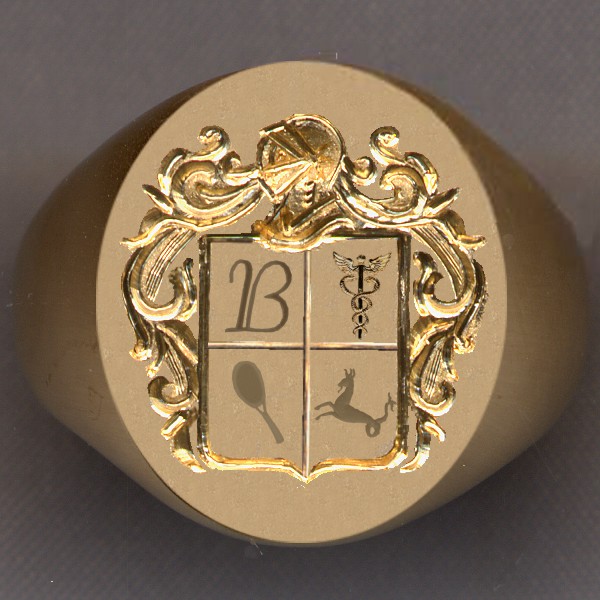EXAMPLES OF HOW TO DESIGN YOU
OWN COAT OF ARMS OR FAMILY CREST
Plain shield as a ring
Plain shield as a drawing
Figure 1: The blank shield with Helmet and Mantle
The basic outline of a coat of arms consists of the shield, the helmet and the mantle as shown here. Inside of the shield (also known as the Field) you may show the symbols or emblems of your choice.
Figure 1: The blank shield with Helmet and Mantle
The basic outline of a coat of arms consists of the shield, the helmet and the mantle as shown here. Inside of the shield (also known as the Field) you may show the symbols or emblems of your choice.
Plain shield as a drawing
Plain shield as a ring
Division of the shield by means of partition lines
Figure 4: Division per bend
This shows a shield divided in two diagonally referred to as “per bend”.
Note that “per bend sinister” is the same except that the diagonal runs in the opposite direction (upper right to lower left). See figure 14 for an example.
Shield per bend as a drawing
Shield per bend as a ring
Figure 4: Division per bend
This shows a shield divided in two diagonally referred to as “per bend”.
Note that “per bend sinister” is the same except that the diagonal runs in the opposite direction (upper right to lower left). See figure 14 for an example.
Shield per bend as a drawing
Shield per bend as a ring
Division of the shield by Ordinaries
Ordinaries are heraldic charges that divide the shield in different parts
Search For Your Surname
So far you have seen the most common ways to divide a shield. Now you may place any symbols or emblems of your own choice inside the shield that will have a special meaning to you; in this way, creating your own and absolutely personal coat of arms. When you have it hand engraved into one of our beautiful rings you can be assured that you have not only a beautiful piece of jewelry but one which is unique, designed by you and hand-engraved by master European engravers.
We shall give you some actual examples, but for the purpose of creating your own coat of arms your own interests and ideas should be your guide. Always remember that the fewer items (charges) in the shield, the less cluttered it will be and the better the end result!
Examples with Charges.
* “Charges” are heraldic emblems or symbols
A single charge (a bull) in an undivided shield as a drawing
A single charge (a bull) in an undivided shield as a ring
Figure 9: A single charge in an undivided shield
This shows an undivided shield with just one charge. Note now the charge becomes large and dominant, drawing the eye. This charge is clearly the focus of the entire Coat of Arms.
Figure 9: A single charge in an undivided shield
This shows an undivided shield with just one charge. Note now the charge becomes large and dominant, drawing the eye. This charge is clearly the focus of the entire Coat of Arms.
A single charge (a bull) in an undivided shield as a ring
A single charge (a bull) in an undivided shield as a drawing
Figure 10: Three charges in an undivided shield
This shows an undivided shield with three charges. The charges may be a repetition of the same charge or three different ones.
Three charges (Lion’s head erased) in an undivided shield as a drawing.
Three charges (Lion’s head erased) in an undivided shield as a ring.
Figure 10: Three charges in an undivided shield
This shows an undivided shield with three charges. The charges may be a repetition of the same charge or three different ones.
Three charges (Lion’s head erased) in an undivided shield as a drawing.
Three charges (Lion’s head erased) in an undivided shield as a ring.
Several charges (pierced stars and a tower) in a vertically divided shield (per pale) as a drawing
Several charges (pierced stars and a tower) in a vertically divided shield (per pale) as a ring.
Figure 11: Charges on a shield per pale.
In a shield vertically divided in two: one charge in one side or another charge in the other side (or one charge in one side and three on the other as in figure 11).
Figure 11: Charges on a shield per pale.
In a shield vertically divided in two: one charge in one side or another charge in the other side (or one charge in one side and three on the other as in figure 11).
Several charges (pierced stars and a tower) in a vertically divided shield (per pale) as a ring.
Several charges (pierced stars and a tower) in a vertically divided shield (per pale) as a drawing
The shield divided in three by a fess: two symbols above the fess and one below as a ring.
The shield divided in three by a fess: two charges above the fess and one below as a drawing.
Figure 13: Charges on a shield divided by a fess.
The shield divided in three by a fess: two symbols above the fess and one below.
Figure 13: Charges on a shield divided by a fess.
The shield divided in three by a fess: two symbols above the fess and one below.
The shield divided in three by a fess: two charges above the fess and one below as a drawing.
The shield divided in three by a fess: two symbols above the fess and one below as a ring.
Figure 14: Charges on a shield per bend sinister.
The shield divided diagonally; a symbol on top and one below.
Note that in this example, we chose to have the diagonal go the opposite way from Figure 4. This division is per bend sinister.
Two charges on a shield per bend sinister as a drawing.
Two charges on a shield per bend sinister as a ring
Figure 14: Charges on a shield per bend sinister.
The shield divided diagonally; a symbol on top and one below.
Note that in this example, we chose to have the diagonal go the opposite way from Figure 4. This division is per bend sinister.
Two charges on a shield per bend sinister as a drawing.
Two charges on a shield per bend sinister as a ring
The shield divided in three by a bend; a charge above and one below as a drawing.
The shield divided in three by a bend; a charge above and one below as a ring.
Figure 15: Charges on a shield divided in three by a bend.
The shield divided in three by a bend; a charge on top (a boar’s head) and one below (a cross Moline).
Figure 15: Charges on a shield divided in three by a bend.
The shield divided in three by a bend; a charge on top (a boar’s head) and one below (a cross Moline).
The shield divided in three by a bend; a charge above and one below as a ring.
The shield divided in three by a bend; a charge above and one below as a drawing.
Figure 16: Charges on a shield divided quarterly.
The shield divided in four; in each quarter a different symbol. In this particular case we have the initial of the customer’s name, a caduceus symbolic of the medical profession, a tennis racquet representing the customer’s hobby and his sign of the zodiac.
The shield divided quarterly; a charge in each quarter as a drawing.
The shield divided quarterly; a charge in each quarter as a ring.
Figure 16: Charges on a shield divided quarterly.
The shield divided in four; in each quarter a different symbol. In this particular case we have the initial of the customer’s name, a caduceus symbolic of the medical profession, a tennis racquet representing the customer’s hobby and his sign of the zodiac.
The shield divided quarterly; a charge in each quarter as a drawing.
The shield divided quarterly; a charge in each quarter as a ring.
We hope these brief guidelines will be of help to you in designing your own personal coat of arms with a view to having it made into a beautiful family crest ring. If you have any questions at all please write to us, we’ll be glad to help in any way we can.

